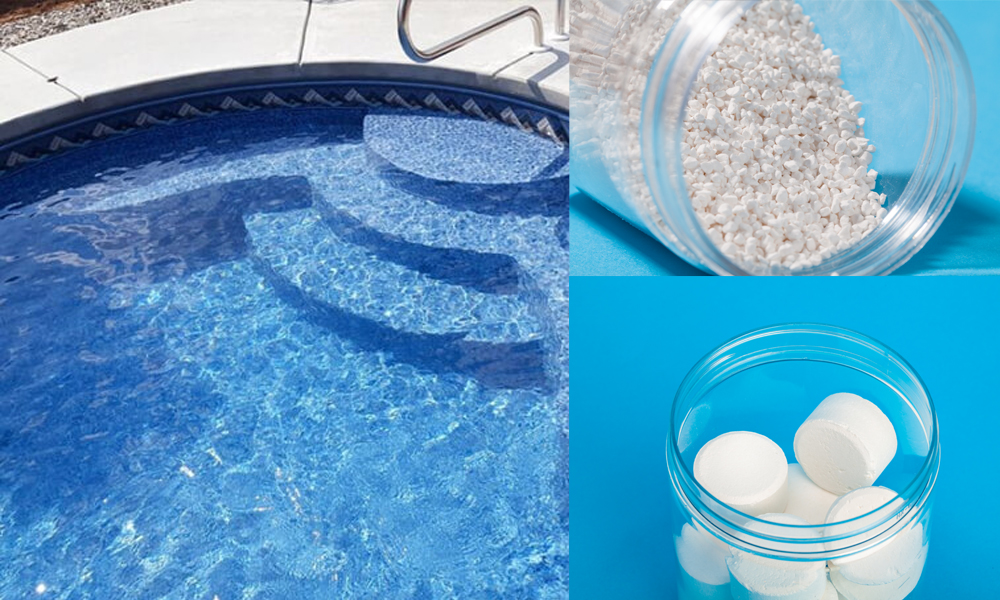Sodium Dichloroisocyanurate (also known as SDIC or NaDCC) and sodium hypochlorite are both chlorine-based disinfectants and widely used as chemical disinfectants in swimming pool water. In the past, sodium hypochlorite was a commonly used product for swimming pool disinfection, butgradually fades away from the market. SDIC has gradually become the main swimming pool disinfectant due to its stability and high cost-effectiveness ratio.
Sodium Hypochlorite(NaOCl)
Sodium Hypochlorite is usually a yellow-green liquid with a pungent odor, easily reacts with carbon dioxide in the air. Because it exists as by-products of the chlor-alkali industry, its price is relatively low. It is usually added directly to the water in liquid form for swimming pool disinfection.
The stability of Sodium Hypochlorite is very low and greatly affected by environmental factors. It is easy to decompose via absorbing carbon dioxide or self-decompose under light and temperature, and the concentration of active ingredients will be reduced so quickly. For example, bleaching water (the commercial product of sodium hypochlorite) with 18% of available chlorine content will lost half of available choline in 60 days. If the temperature increase 10 degree, this process will be shortened to 30 days. Due to its corrosive nature, special care is required to prevent leakage of sodium hypochlorite during transportation. Secondly, because the solution of sodium hypochlorite is strongly alkaline and strongly oxidizing, it must be handled with great care. Improper handling may cause skin corrosion or eye damage.
Sodium Dichloroisocyanurate (SDIC)
Sodium dichloroisocyanurate is usually white granules, which has highly stability. Due to its relatively complex production process, the price is usually higher than NaOCl. Its disinfection mechanism is to release hypochlorite ions in aqueous solution, effectively killing bacteria, viruses and algae. In addition, sodium dichloroisocyanurate has spectral activity, effectively eliminating potential microorganisms and creating a clean and hygienic water environment.
Compared with sodium hypochlorite, its sterilization efficiency is less affected by sunshine. It is highly stable under normal conditions, not easy to decompose and safe, and could be storage for 2 years without lose of disinfecting effectiveness. It is solid, so is convenient to transport, store and use. SDIC has a lower environmental impact than bleaching water that contains large amounts of inorganic salts. It breaks down into harmless by-products after use, reducing the risk of environmental pollution.
In summary, sodium dichloroisocyanurate is more efficient and environmentally friendly than sodium hypochlorite, and has the advantages of stability, safety, convenient storage and transportation, and ease of use.Our company mainly sells a variety of high-quality sodium dichloroisocyanurate products, including SDIC dihydrate granules, SDIC granules, SDIC tablets, etc. For details, please click on the company’s homepage.
Post time: Mar-18-2024

